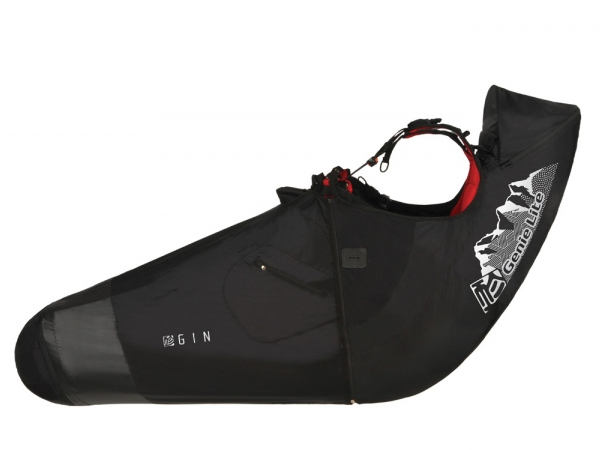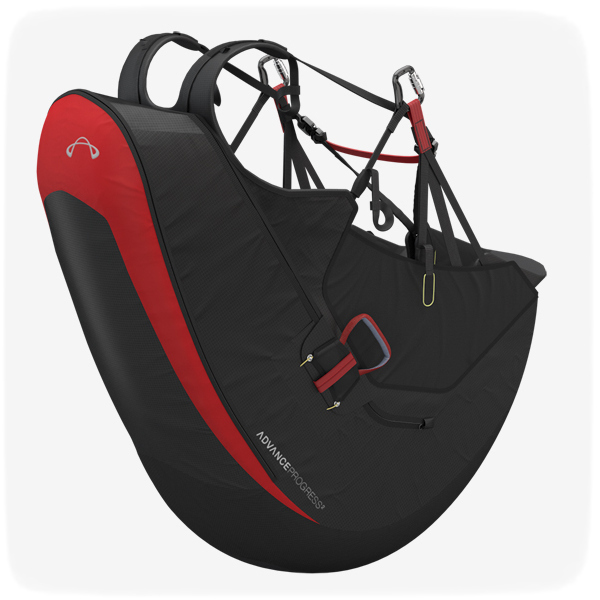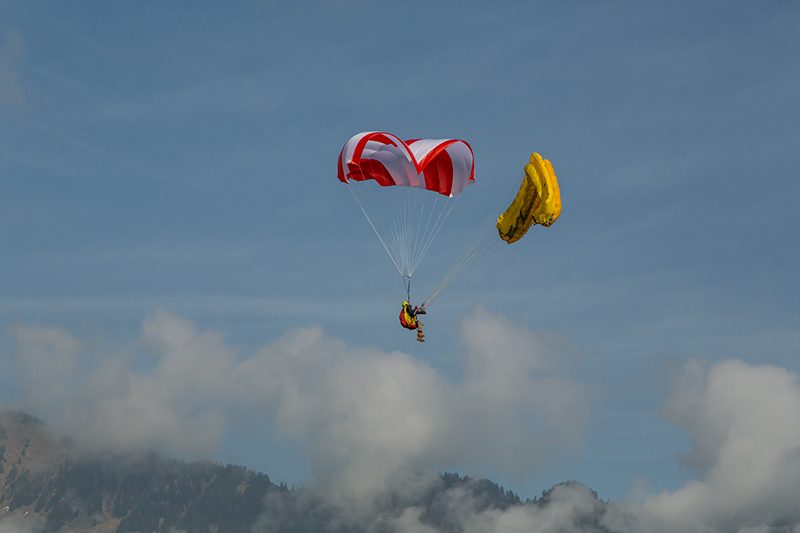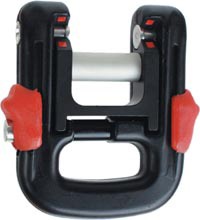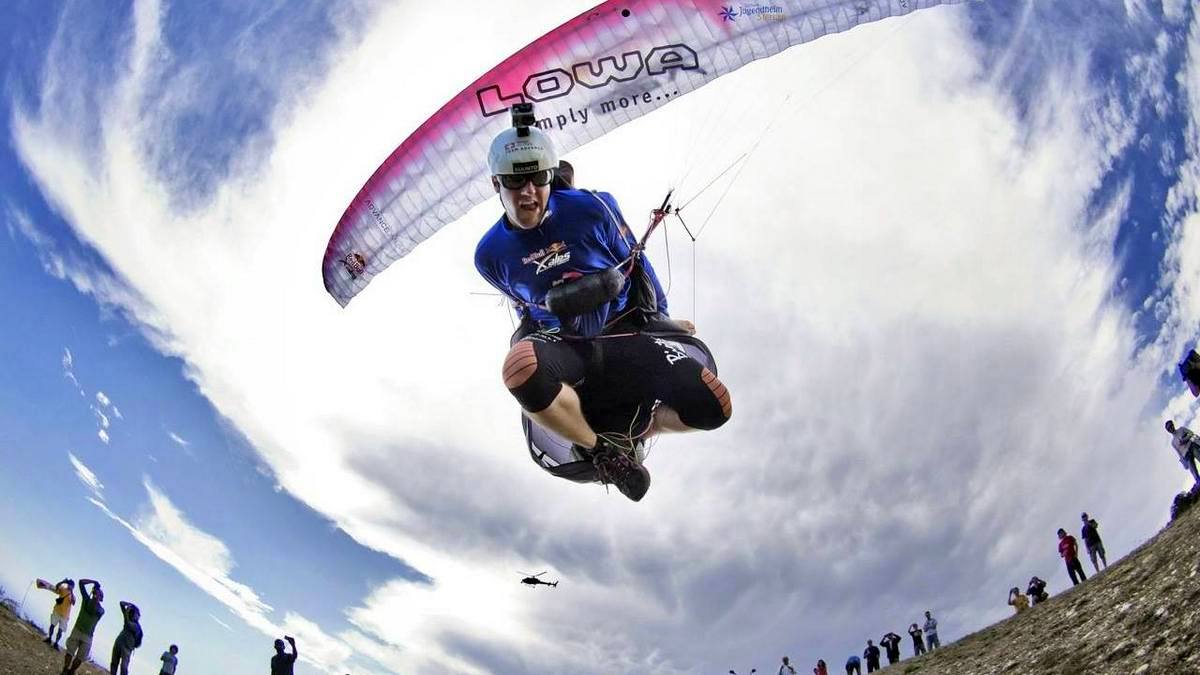
We investigate various aspects of your flying equipment.
Reducing your gear risk is simple: upgrade as many elements as you can afford.
A harness with certified back protection is an absolute must-have, the most reliable being the mousse-bag foam system in use since the mid 90s. The lightweight travel-style airbag harnesses are certified to absorb one impact, but bear in mind that on the launch site, after a hard landing, and if you’re flying rocky terrain, your risk is higher because there will be little between you and the ground. Hybrid designs feature the best of both: look out for some kind of pre-inflation system and built in foam so you have passive safety.
Harnesses contribute to safety in many ways. A good design ensures that you have the best balance between comfort, security and feeling.
Your chest strap setting should be at the recommended distance between the carabiners (42-50cm, depending on your pilot weight), or you have increased risk of instability or riser twists. This is hard to measure unless you're in flying position. Your body position is just as important for enhancing stability. That's why you should ideally have a professional harness fitting and setup session with an equipment specialist when you buy a new harness, so you can get the adjustments right.
GIN GENIE LITE 2 ^ A modern pod harness with comfort and certified back protection
ADVANCE PROGRESS 2 ^ A lightweight reversible harness
According to some SIV experts, the pod harness increases your risk of getting riser twists. However, this is a moot point as most pilots in open harnesses fly with a foot stirrup, putting themselves in the same prone position. In either case, when encountering severe turbulence it’s best to sit upright so you rotate with your risers.
A good helmet reduces your risk, but it loses strength with age, particularly if there are any cracks in the shell. Because every helmet design is matched to a different head shape, be sure you're getting the perfect fit. Check to see that it can't easily be pulled off – you might be surprised when you lift the chin-piece. A full-face helmet offers maximum protection, but many open-face helmets are still certified while being lighter. They reduce the size of your pack, because they squish down on top of the wing nicely. The best helmet is the one that stays on your head.
ICARO NERV ^ Certified protection, visor, lightweight
If you fly with normal hiking boots, consider upgrading to paragliding boots whichare shock absorbing, lightweight and waterproof. They offer extra ankle support which helps during hard landings and is very useful in mountainous terrain. They also have enclosed eyelets so no risk of lines catching on your boots, which can be character-building if it happens after launch.
Reserve parachutes are life-savers, but they do not reduce your risk just by buying them. To reduce your risk, you must learn how to use them, and check your system regularly. There are regular BHPA repack clinics throughout the year: check the events calendar for a session near you. Consider the new steerable designs, which greatly improve your landing options.
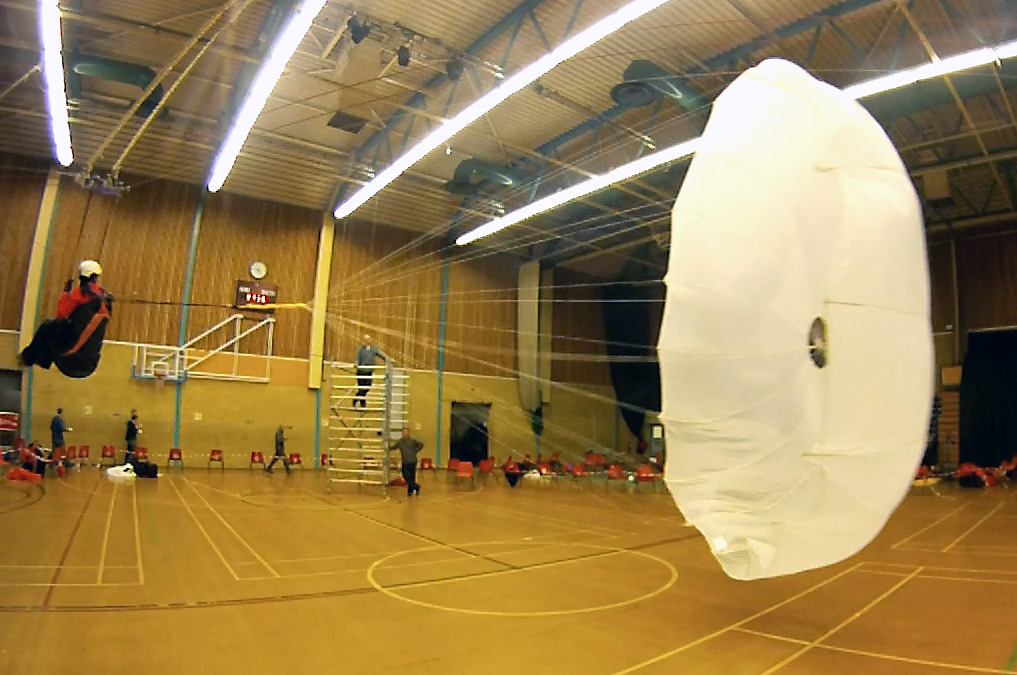
^ A pilot throws her washing out during a BHPA repack clinic
Some of the reserves at repack clinics have deployment problems, usually due to bonded hook and loop fastener strips, awkward harness designs, or reserves being put in the wrong way into the harness. Packing errors are less common, but it does highlight the need to understand the reserve before it can work for you and not against you.
Once you own a reserve, you must check the pins every time you fly. Accidental deployments are risky moments because you tend to land on things you didn’t want to land on.
Various studies have been done relating to the placement of the reserve handle on harness, with differing opinions. Be sure you know where your handle is! Practice reaching the handle on every flight, so it is second nature.
HIGH ADVENTURE BEAMER 3 ^ Steerable reserve with incredibly low sink rate and fast opening time
Don’t forget the condition of your carabiners! Over time, metal fatigue sets in. Although carabiner failures are rare, you should check for cracks and replace them if they are looking worn. The quick-out carabiner system is essential for tandem flying and recommended if you’re doing XC in windy areas. If you’re getting dragged through hostile terrain, the ability to jettison your wing while remaining inside your protective harness makes a huge difference.
Charly Quick Out Karabiners: Use with Charly Brummel Hook Speed-System Separation System
A radio means you can benefit from shared knowledge and warnings from other pilots in your area. But it’s pretty useless in a pocket. Make sure it’s strapped in a well positioned radio pouch so the antenna is vertical in flight and not touching anything. The best place is fixed to the base of your carabiner.
A fully charged mobile phone is vital, but consider where you put it. The side pocket of the harness might get crunched on impact. A chest or sleeve pocket on your jacket is more protected and accessible. On a smartphone you can use apps like Google Latitude to share your location with friends. This makes finding downed or lost pilots much easier.
A satellite tracking device (aka satellite communication device) like Garmin InReach (was Delorme) or SPOT devices allows for pilot tracking even when you explore beyond the coverage of the mobile network and can alert emergency services with a simple press of the ‘SOS’ button. If you’re doing XC flying, this is a great risk-reducer.
Finally, a GPS is a useful tool for XC flying, giving you a constant update on your speed over the ground, which reduces your risk of being blown over a ridge in wind you didn't recognize. It is indispensable for navigating around airspace so reduces your risk of collision with easyJet flight number 666.
Those are some of the main items to consider. There are many small things that add up to your combined gear risk. With a bit of forethought and preparation you can improve your kit so you arrive at the hill with less inherent risk and a greater margin of safety.
Next issue we'll look at site risk. In the meantime, remember to do your daily equipment inspection to further minimise the risk presented by your equipment.
Brought to you by Flybubble
Like what we do? The best way to thank and support us is to buy gear from us and recommend us to others. Review our service on Trustpilot and our products on Flybubble Shop. You can also subscribe to Flybubble Patreon. Thank you!

